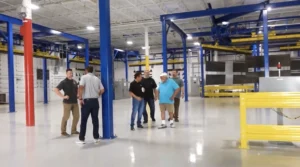Using AI to Level the Playing Field between Homeowners and Service Providers
Navigating the infrastructure, land and relationships in construction. Host Adam Morrisey interviews global leaders in the built environment exploring the people, ideas and innovations guiding the construction and civil engineering industries into the future.
Can data revolutionize how homeowners manage and maintain their property? The new age of smart homes is here, and Dirt Work is getting to the bottom of how AI, IoT sensors, and technology are making this happen. Host Adam Morrisey discussed the topic with Shipshape co-founders Alexander Linn and Ryan Dalton. Shipshape is a startup focused on empowering homeowners with data about critical systems to make better decisions using AI, IoT, and machine learning.
While most areas of smart home automation are focusing on security or activating appliances by voice, Shipshape has a unique perspective. Linn said, “The technology starts with the occupant and providers taking care of the home. The issue is that neither has any data about the critical systems. They are driving blind.”
From HVAC systems to pools to dehumidifiers, equipment is working every day in homes. Still, insights on its performance are hard to come by without complexity and cost. Hence the need for a user-focused, practical AI solution.
Dalton described the solution as “a way for homeowners to get peace of mind and solutions to problems they care about.”
The Shipshape model doesn’t require technical savvy or large investments. Instead, they recommend sensors that work with their platform, which is a long list. A simple kit can modify existing systems. By adding these sensors, homeowners can understand energy consumption and optimize it. It can also monitor indoor air quality and analyze equipment data to predict a possible maintenance issue or need.
What about security and privacy in the collection of data? Many in the technology field are prioritizing these aspects. “Consumers think technology is a black box used against them, and we built this program to change that perception,” Linn added.
For listeners interested in keeping up on trends in home automation and technology, Linn and Dalton recommend the publications from Stacey on IOT and Mark Benioff’s books Trailblazer and Beyond the Cloud.









